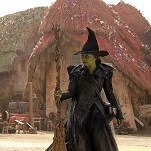David Reyes & Tom Waldman: Land Of A Thousand Dances: Chicano Rock 'N' Roll From Southern California

The birth of rock 'n' roll is generally attributed to the meeting of black musical styles and white musicians: the intersection of Sun-sponsored country and rockabilly and Chess R&B. In Land Of A Thousand Dances, writers David Reyes and Tom Waldman attempt to reveal the role Spanish-speaking audiences in Southern California played in the birth of rock 'n' roll. Although the pop-history books are relatively silent when it comes to the influence of Mexican-Americans, Reyes and Waldman assert that the fledgling fad might never have succeeded without the support and participation of Chicanos. Reyes and Waldman note that young Chicano audiences were equally enamored of both white and black music, and, being neither white nor black themselves, had no problem making allegiances to favorite performers from any and all backgrounds. Be they big-band, doo-wop, or straight-up norteño, Chicano audiences flocked to SoCal's social events. It was inevitable, then, that Mexican-American musicians would eventually assimilate various pop forms into their own unique mix. Reyes and Waldman write of "Louie, Louie" author Richard Berry, whose rendition of the soon-to-be-timeless classic was deemed "too Latin," and of Lalo Guerrero's humor-fueled crossover after a humiliating name change to "Don Edwards" backfired. From there, the authors follow the path through Cannibal & The Headhunters' "Land Of 1000 Dances" ("Cannibal" was actually Frankie Garcia), Ritchie Valens' breakthrough, Thee Midniters' fleeting success, and, ultimately, Los Lobos' post-punk mainstream success, pausing along the way to put the music in a political context by detailing the rise of the Chicano power movement. It's fascinating to read this alternative history of pop music, as Land Of A Thousand Dances offers a wealth of anecdotes, interviews, and facts that have never been so meticulously documented. The book helps fill one of the biggest gaps in the rock timeline, ensuring that rock 'n' roll's Chicano roots will not be forgotten.







































